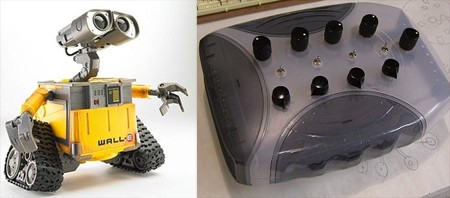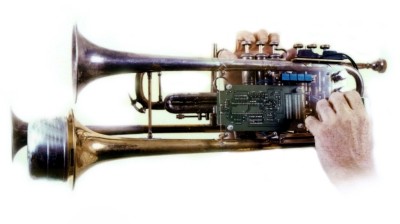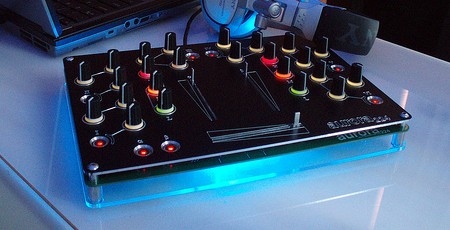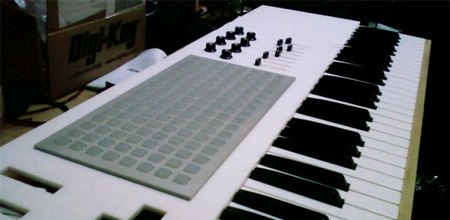
Whether you loved, hated, or didn’t see Wall-E, it’s hard not to fall in love with the iDance Wall-E toy. Connect him to an audio source and Wall-E will dance around like an epileptic Billy Bass.
[Gian Pablo Villamil] at NYC Resistor wondered whether it would work with his custom made Rhythmic Synth, and to his and our delight, it does! The Rhythmic Synth is an older project of his; it is a simple rhythm generator with 4 pitch knobs, 4 modulation knobs, and 4 phase switches. The case was taken from an old external Iomega CD-ROM drive.
Getting the Wall-E to dance isn’t much of a feat, but something about the dancing combined with a synth with embedded lights just screams robot dance party, and that can never be wrong. We’d love to see the Wall-E dancing to a cleaner, more complete synth: maybe this one. Check out Wall-E busting a move after the break.
Continue reading “Dancing Wall-E And Rhythmic Synth” →















